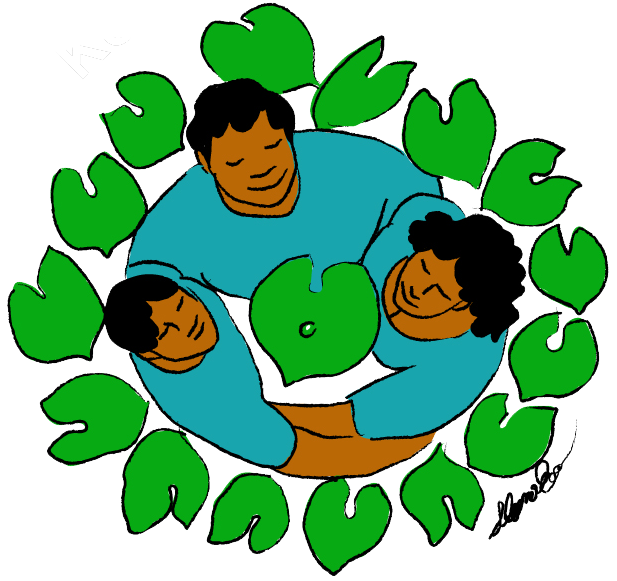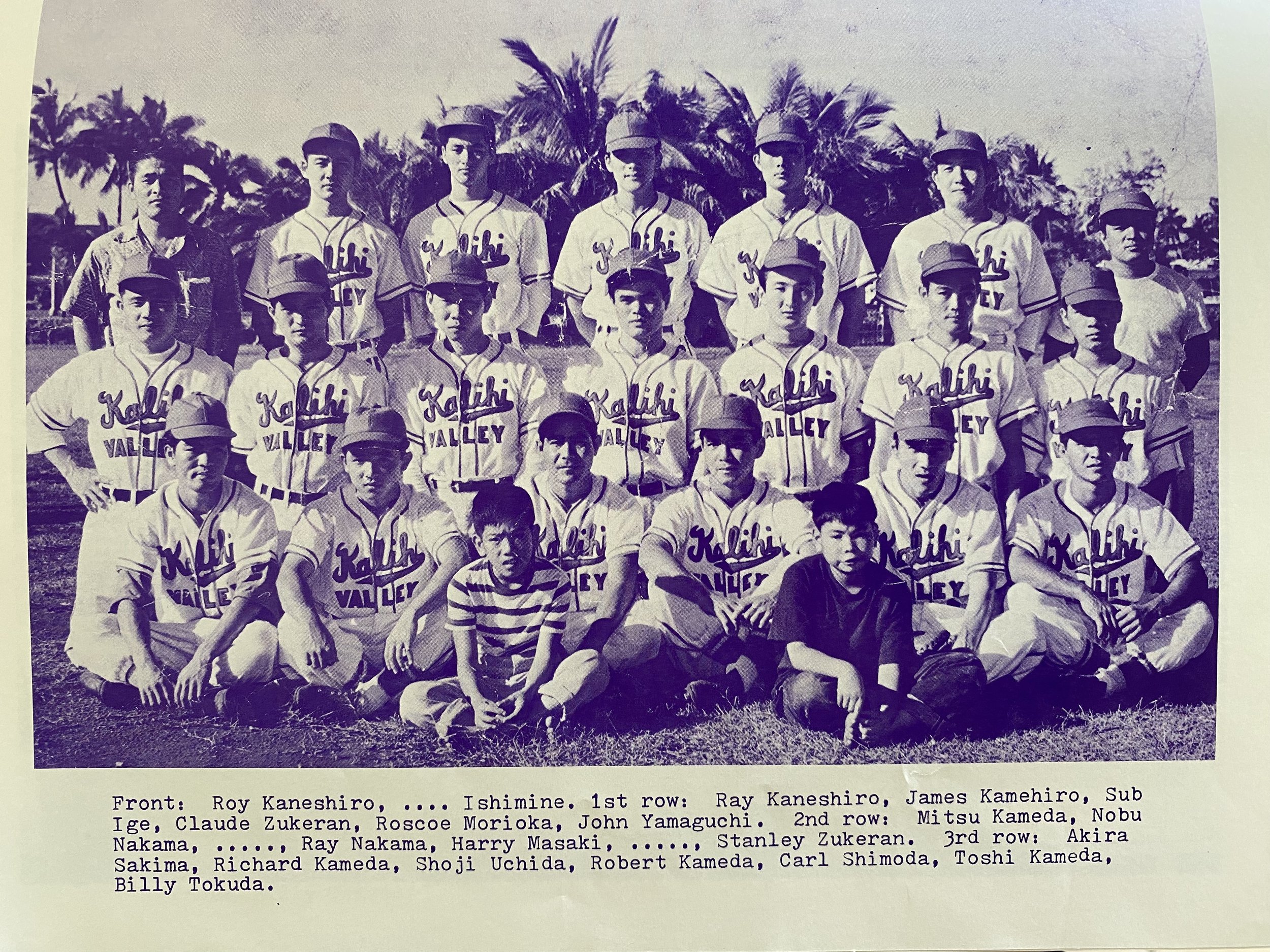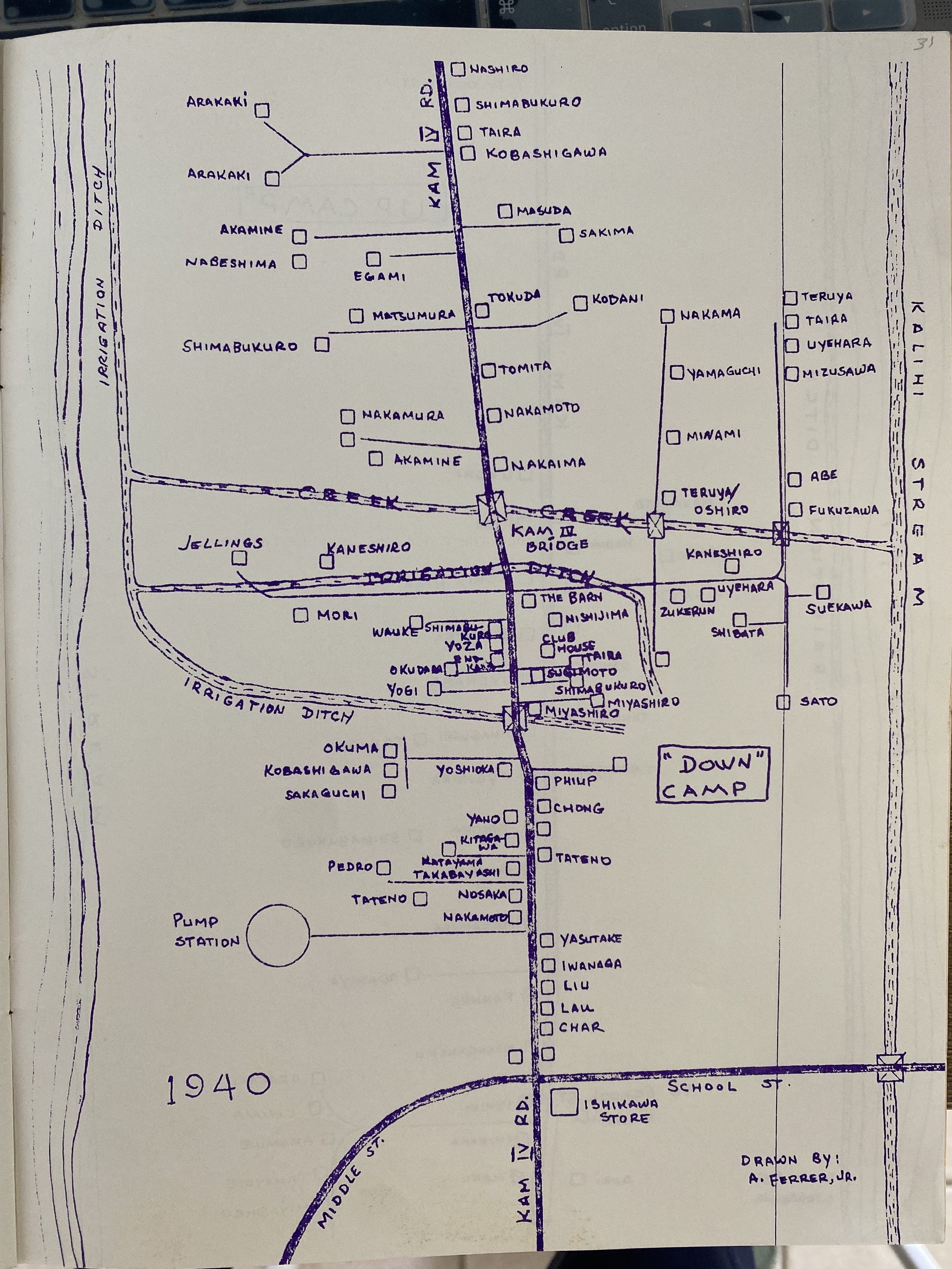Voices From the Past: Our Valley, Our Furusato
The following excerpt was taken from KKVʻs archive and recounts a history of Kalihi that only a few can recall. This is the third part in a multi part series. Some portions of this content have been edited for continuity.
KALIHI VALLEY 1940s continued…
The [football] team also sponsored the first dance held in the community at the home of the Matsumuras, who were nisei (second generation) parents. Many issei parents looked coldly on social dancing where boys and girls embraced so closely. In days when boy-girl relationships were still very restrictive, when even marriages were mostly arranged according to the customs of Japan, to have a dance in the valley was a revolutionary change. The dance was successful because girls who had helped with the money-making projects served as gracious hostesses for the evening. The boys from Kauai greatly enjoyed themselves.
The former distance that kept the sexes apart began to disappear and the reserve began to melt away. Eventually quite a number of boys married the girl next door.
War Years
Continuation of the football team: As World War II continued, more and more of the older team members left to fight in the war, but the football team continued to win. The population of the community had increased and there were enough capable younger boys to take the place of those who were drafted. Also, inspired by the great performance and tremendous teamwork of the Kalihi Valley team, players from as far away as Kahaluu came to join the team. Commuting every afternoon, six days a week, via Nuuanu Pali (there was no Wilson Tunnel) certainly reflected commitment and dedication.
Induction and Wedding Parties
During the war years, there was either an induction party for the draftees or a wedding party every weekend. Families coordinated their plans to reduce conflicts in dates. A party at Kam IV meant a celebration that required at least three days. On the first day, the men put up the tents while the women prepared some food. On the second day, the day of the party, the men dressed and cooked the kalua pig in the imu while the women cooked the rest of the food. On the third day, the tents, tables, and benches were taken down; the women prepared and served food to the workers.
Some Kam IV boys who went into combat never came back. Others served as gallantly and returned home safely. There were mixed feelings of excitement and sadness at the end of the war. Alfred Arakaki was responsible for one of the most exciting surprises! He brought a war bride home from Europe. His story made the headlines in our local newspapers because he was one of the first from Hawaii to do so.
Fate of the Football Team
After reigning as champs for five long years, the Kalihi Valley football team was eventually defeated. The eviction notice that the families received to clear the area for Kalihi Valley Homes may have had a tremendous bearing on the defeat of the football team. Nevertheless, a good number of Kalihi Valley players advanced right into high school varsity teams, where they performed outstandingly. It was said when high school coaches realized someone trying out for the varsity team had played on the Kalihi Valley teams, that person was automatically selected. The record of the Kalihi Valley Barefoot Football team is engraved on the annals of barefoot football in Hawaii.
Baseball
Role of “Pluto” Arakaki: When Kalihi Valley is mentioned, people think of football and the team’s achievements. Actually, the athletic activities in Kalihi Valley began with baseball. Richard “Pluto” Arakaki, who worked on a federal defense project, was responsible for starting the baseball team. Using his own money, he bought the equipment and organized the “third wave” Nisei into a team. In 1942, the team entered the City Wide Novice Baseball League and took the championship. Imagine, entering an organized league for the first time ever and capturing the championship! The success of the baseball team inspired the creation of the football team that same year. The baseball boys joined with the “second wave” nisei with the challenge: “Eh, think we have a chance with football too?”
Baseball Champs
The baseball team later became champion of the Citywide Amateur League, which was the next higher league. Next came the championship of the Honolulu Baseball League, which was considered one of the better leagues in the city. Ultimately, several of the players advanced to play in the Hawaii League, the premier league in Hawaii. This was quite a distinction for only the best players were selected to play in this league.
Besides winning the baseball crown, the players worked hard to help their candidate become queen of the Honolulu Baseball League. The tremendous spirit of cooperation and ambition resulted in success in all their undertakings. Today the men of Kalihi Valley truly appreciate Pluto’s generosity in helping to launch the sports programs which did much to better the life in our community.
Pluto was not the only one with a nickname. There were many hilarious names ranging from those that were jokes to those that were almost insults. But when a relationship is very close, any nickname is accepted in good humor. To this day, a number of the boys are called only by their nicknames; their first names are not widely known. Some of the nicknames used were:
Pluto A ja baa Beer Sister Donkey Ha ge Al Capone
Buta Manju Monkey Blondie Rabbit Jalop Stuka
Bobo Mullet Cowboy Chu-chun Bomber Small Mike Bull
Jinks Borinky Big Mike Pro Dopey Brass Monkey Apaa
Oink Nut Doc Bull Cow Doggie Shorty Guinea Pig
Sugar O Chun Potatoe Hunk O Shit Juju Old Man Sparky
Ice Cream Kaloney Pake boy Spooky Kon tit Piston Smiley
Turkey Shiek
Can you identify anyone?
Hand drawn map of Kalihi Valley in the 1940s
Boxing
Before the war, several boys from “The Bridge” (Kam IV Road) were recruited to form a boxing club. Without a permanent clubhouse or ring to train, all of the boys made it to the upper class in their weight division. This motivated many younger boys from “down camp” and also from “up camp” to enter boxing tournaments. In spite of the lack of adequate training facilities, many of our boys displayed natural talents and distinguished themselves in the ring. Kalihi Valley could have produced a championship boxing club.
Jiro Sato and his family: In the field of boxing, one person truly stands out: Jiro Sato. One of the “first waves” nisei, he was a member of the Kalihi Tendering Hard Football team and the most feared Featherweight boxer of the 1930s. His bouts with Anson Rego were classics. The matches rank as one of the most memorable in amateur boxing.
Jiro was one of the first to marry a “gaijin” (non-Japanese) girl. Back in the early years, the parents expected their children to marry their own kind; marrying outside of one’s group was not looked upon favorably. But Jiro’s part-Hawaiian wife, Florence, earned the respect of everyone because she worked hard on the family farm while her husband went to work in town. Father Sato was advanced in age so Florence and her sister-in-law (Jiro’s brother’s wife) did most of the farm work. These two “city girls” surprised everyone by turning out to be exceptionally fine daughters-in-law, wives, and mothers. Jiro and his wife will be celebrating their golden anniversary at about this time. Their daughter, Mae became the Hawaii Visitor Bureau’s poster girl in the 1950s. Her smile beckoned all the tourists to come to Hawaii. It is with pride that Kalihi Valley claims this charming beauty as ours.
Remarkable Achievement in All Sports
Football, baseball, boxing, the boys reached the pinnacle of success in all of these sports inspite of the lack of a playing field, gymnasium, and other sophisticated facilities. Playing touch football on a rough Kam IV Road prepared them for the gridiron. Baseball was learned at an open field (Egami Field) where grass was about ten inches high. And there was no site where boxers could do their training. It is truly amazing how much they were able to attain and achieve.
Outstanding Individuals
Distinguished Service: Kalihi Valley produced a number of individuals who should be recognized for their achievements and distinguished service to the society of Hawaii.
Robert (Bob) Taira served in the State House and the Senate with distinction. As a legislator, he was widely respected for his leadership. After retiring from the Legislature, he was called upon to serve as State Labor Negotiator where his thorough knowledge of labor and business proved a tremendous asset. Later he was appointed City Liaison Officer.
Aikira Sakima served in the State House for ten years. As House Chairman of the Committee for Higher Education, he was instrumental in broadening college opportunities for Hawaii’s children. He has served his community in many other capacities: he was president of the United Okinawan Association, he is an elder of his church, and he serves on the boards of the Kalihi YMCA and Susannah Wesley Home.
Ryokichi Higashionna, who came to Kalihi as a teenager from Okinawa shortly before the eviction, is now State Director of Transportation.
Professionals
Dr. Robert Oshiro distinguished himself by being the first nisei from Kalihi Valley to enter medicine in the field of naturopathy. He has also devoted much time serving as an officer in many worthy organizations.
Dr. Stanly Zukeran is a pedodontist (children’s dentist).
Herbert Shimabukaro and Keith Kaneshiro are attorneys-at-law who served in the City Prosecutor’s office.
Entrepreneurs
Yasuo Uezu, who in his youth had come from Okinawa to work as a farmhand, founded the extremely successful State Poultry Processors Co. He now also owns the Hawaii franchise to the Popeye’s fast food chain.
The Shimabukuro brothers (Jerry, Gary, and earlier, the late Philip) own and operate Mikilua Poultry Farm, the State’s largest egg producing farm.
Aaron Yoza and family own and operate the Hawaii Delite Beverage Inc., distributors of the popular “Delite” soda.
Ike Akamaine is the successful owner of St. Louis Florist while his brother, George, is president of Regency Sales.
Two other enterprising owners of small businesses are Matt Yogi of My Printers and Tets Nakamoto of Nakamoto Service Station.
Hand drawn map of Kalihi Valley in the 1940s
Kalihi Valley 1950
Eviction
Finally in 1950, the notice of eviction to make way for the Kalihi Valley Homes was received. This friendly and loving community were told rudely to pack up and get out. No alternative or assistance in their relocation was offered. Eviction date was set, and the deadline was expected to be met emphatically. These law-abiding people, without protest or confrontation, feverishly worked to move out of the valley. There was no confrontation, like the incident that occurred in Kalama Valley. Because of the early childhood teachings of respect for authority and the bearing of sacrifice by the Kam IV people, it was possible to build multiple housing for the low-income people. Surely, a noble display of love and understanding by our people, in spite of the hardship that they had to endure because of the eviction.
Relocation
Relocation meant many hardships and sorrows, but it also brought on blessings and rewards. Eventually fate would be kind to these amiable people who relocated to Waianae or elsewhere. The land they purchased back then, now has appreciated in many folds, they are now “land rich.” All those who bought the properties they relocated to were able to obtain it before property prices went into orbit.
Kalihi Valley Still “Furusato”
It is amazing, how a simple project like organizing a small team, can blossom into a major undertaking that leads the whole community to avenues of self pride and glory. Through the sports program the youngsters began to acquire the skills of organization, Financial and fiscal responsibilities to operate the teams, were bred into them. Loyalty and devotion, in an all-out effort to capture the championship were instilled into their characters. Farm chores and sports activities left them hardly any time to become involved in trouble or crime. Boys and girls working on these activities, eventually brought about social changes, which benefitted our community tremendously.
Thirty years have passed since the eviction, but the feeling of kinship and love among the people of Kam IV lingers. The memories of pleasant days, happy events and brother-sister love are still with us. Though most of us have left the valley, our “furusato,” we look toward the Kalihi mountains and say, “How green was my valley.”
KKV’s Accomplishments
Starting in 1971








